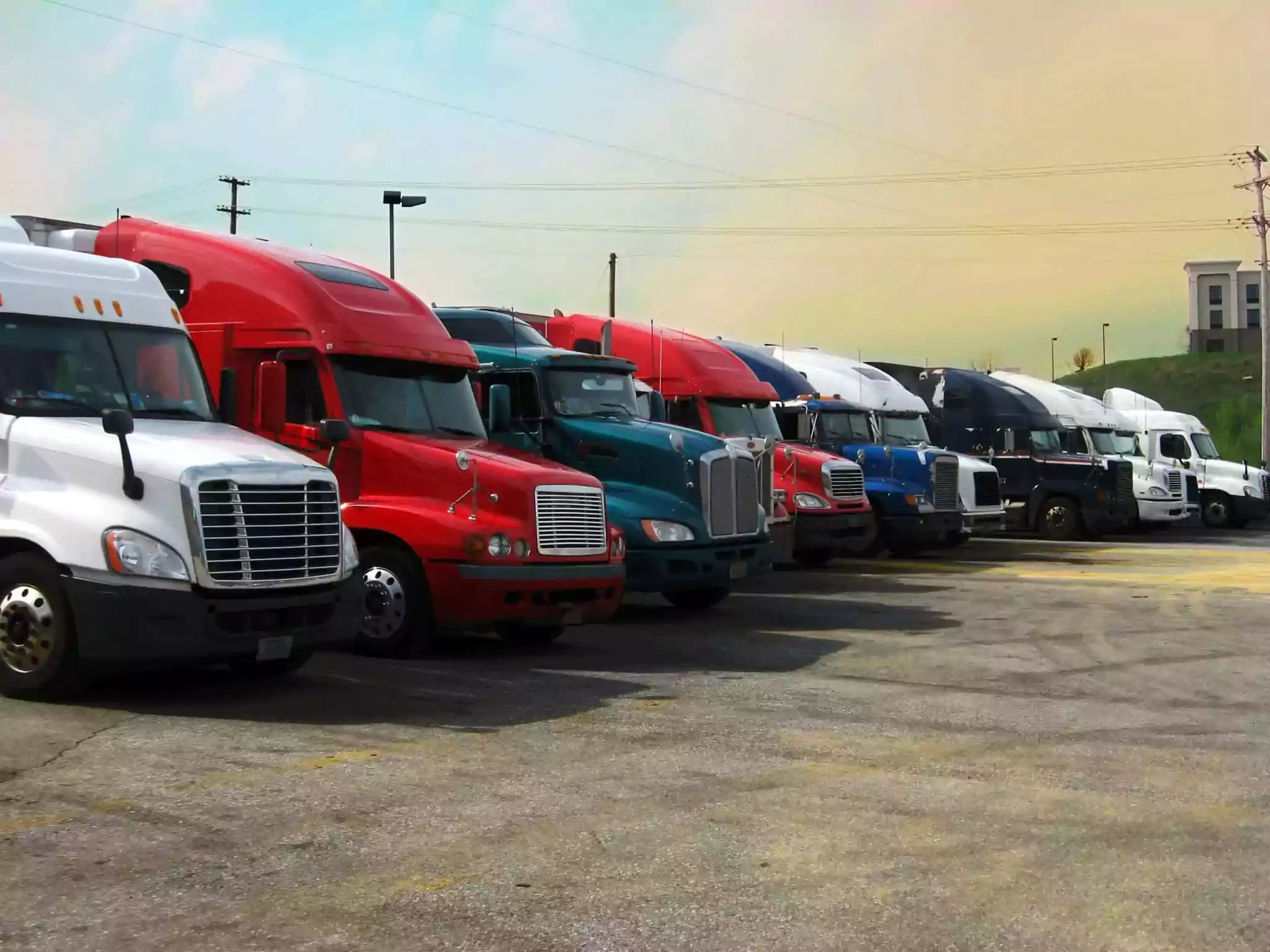
If you’ve ever been driving along and your check engine light comes on, you know that feeling of panic that arises. But, if you can identify the problem on your own, you can ease the stress of an “unknown issue.” That’s why it’s vital to learn more about why the engine light turns on, how to determine its reason, and how to understand the DTC code and its meaning once you find it.
Read on to understand the DTC meaning behind any code to which your vehicle alerts you.

What Is a DTC Code?
Diagnostic trouble codes (DTC) are alert codes for problems in a truck or delivery vehicle. When your check engine light — or malfunction indicator lamp — turns on, you’ll know there is a problem but not precisely what it is. Once you use a scanner tool to pull the error code, you’ll know exactly what is wrong with your truck.
Where Do DTCs Come From?
DTC codes come from your vehicle’s onboard diagnostic system. This system finds the issue and creates an alert so the driver is aware of the problem.
Onboard Diagnostics (OBD) Systems
The onboard diagnostic system is designed to monitor a vehicle’s performance and send an alert when there is an issue within the car.
OBD-II vs. J1939
There are two types of code systems, and your truck will comply with one of them, depending on your vehicle type.
- OBD-II-compliant — Any car or small truck built or sold after January 1, 1996, must be OBD-II-compliant in the U.S.
- J1939-compliant — This requirement is for diesel engines or equipment. It is standard for large vehicles like buses and heavy-duty trucks.
OBD-II DTC Codes
When your vehicle pulls DTC codes, you need to know what they mean to address the issue properly. Here’s the meaning behind each character of a DTC code.
The First Character
DTC codes always begin with a letter to indicate which control system is having a problem. Only four letters can pull up; here are the DTC meanings behind them.
- (B)ody — This code indicates problems with parts or systems usually found in the glove box area.
- (C)hassis — This code is for your mechanical systems outside the glove box area, like braking, steering, and suspension.
- (P)owertrain — This code pulls for issues with your engine, fuel system, and transmission.
- U (network) — This code is for your vehicle’s onboard computers and related systems.
The Second Character
After the letter in a DTC code, you’ll have a number, usually a 1 or 0. This number helps you know if the error code is standard or not.
- 0 — What does an 0 DTC code mean? This indicates the issue is a standard Society of Automotive Engineers code. If your vehicle system is OBD-II-compliant, it will always pull a 0 for generic codes.
- 1 — A 1 is less common than a 0 and will pull up if the issues are specific to your vehicle’s manufacturer.
The Third Character
The third character is another number and is listed from 1 to 8. Whichever number appears indicates which subsystem has an issue.
- 1 — Air or fuel metering system
- 2 — Air or fuel metering injection system
- 3 — Ignition system
- 4 — Emissions system
- 5 — Idle control system and vehicle speed controls
- 6 — Computer output circuit
- 7 and 8 — Transmission issues
The Fourth and Fifth Characters
Characters four and five are combined for a two-digit number. This number ranges between 0 and 99 and is called the Specific Fault Index, which identifies your vehicle’s specific issue.
J1939 DTC Codes
The J1939 system is DTC codes for diesel engines. Four fields indicate what problem is being flagged.
Suspect Parameter Number (SPN)
This identifies parameters around the DTC, showing the data type, range, resolution, reference tag, and more.
Failure Mode Identifier (FMI)
This type of error includes short circuits, value range violations, and calibration errors, among other things.
Occurrence Counter (OC)
This is how often the error happens for every SPN.
SPN Conversion Method (CM)
This field details the byte alignment for the diagnostic trouble code.
How to Interpret a DTC
If you are getting an error symbol on your vehicle, you must identify the DTC meaning to know the issue. To do this, you’ll need a diagnostic connector to scan the system.
Once you have your code scanner, you need to plug it into the OBD-II diagnostic connector, which is a 16-pin plug that is typically located on the left side of the steering column underneath the dashboard. When the code scanner is plugged in, turn on your vehicle, then select “read codes” from the scanner’s menu. The letters and numbers that appear create your DTC codes to show what the issue is with your car.
Let’s look at one of the most common DTC codes and, using the information listed above, learn how to read it.
Your scanner is showing P0420; what does this mean?
- P — This is an issue in your powertrain system (transmission, engine, and accessories).
- 0 — This is a standard code.
- 4 — This is the subsystem of the powertrain system. A 4 indicates a problem in the emissions system.
- 20 — This is the Specific Fault Index, so you know exactly what the issue is. In this case, a 20 at the end of P04 indicates that the catalytic system has low efficiency.
Common DTC Codes
Vehicles are complex machines, and many systems and parts can malfunction. While there are over 5,000 DTC codes, here are the 12 most common diagnostic trouble codes that drivers encounter.
- P0128 — Coolant thermostat
- P0171/P0174 — Fuel trim system lean bank 1/2
- P0172/P0175 — Fuel trim system rich bank 1/2
- P0300 (all) — Engine misfire detected
- P0401 — Exhaust gas recirculation flow insufficient
- P0420/P0430 — Catalyst system low efficiency
- P0440/P0442/P0455 — Evaporative emission system — generic/small leak detected/leak detected
Are All DTC Codes Urgent?
When the engine light comes on, many people worry that it is an immediate emergency. While this light always indicates a problem, the DTC severity depends on what the problem is. That means DTC codes are separated into two categories: critical and non-critical.
- Critical — These need to be addressed immediately due to the damage they can cause to your truck.
- Non-critical — These problems aren’t urgent but need to be addressed soon.
Once you know which code your car is pulling, you can determine if it is critical or non-critical.
Can I Clear DTC Codes?
When you fix the problem creating the DTC code, the code will go away. Many people try to clear the code through their scanner tool, but this is not recommended as the issue is still present and will cause more significant problems the longer it is ignored.
DTC Scan Tools for Fleet Managers
Having a code scanner for one truck is easy, but what about business owners with a large or small fleet of vehicles? Manually checking each car with a DTC error code scanner would be extremely time-consuming, but a fleet management tool makes the process quick and easy.
Simply plug a cloud-connected device like an ELD into the OBD-II port in each fleet vehicle, and you’re all set. When DTC codes occur, they’ll automatically be uploaded to the cloud and immediately alert you.
Automating the DTC Process
By automating this process, a dispatcher is instantly notified of DTC codes and can help the driver diagnose and handle the issue. This automation system monitors vehicle health and maintenance, tracks speed, idle time, and wear and tear, and helps minimize more significant problems like engine failure or fleet delays.
What Your Drivers Need to Know About DTCs
There are a few things that fleet drivers should know about diagnostic trouble codes.
- Never ignore the check engine light; figure out the problem and address it as soon as possible. The longer you ignore it, the worse it could get.
- The engine light can also cause other indicator lights to turn on, like the supplemental restraint system.
- The engine light may turn on and off or stay on until the problem is fixed. However, even if the light turns off, the driver should still get their vehicle checked.
- Never clear the DTC code just to turn the indicator light off. Wait until the issue is resolved before clearing the code.
Are You a Fleet Manager?
If you own or manage a small fleet of vehicles, GPSTab has comprehensive management tools that make your operations — including identifying and resolving DTC codes — easier and more streamlined.
Contact us today to find ELD solutions, asset trackers, dash camera systems, and more to make fleet management a breeze.





